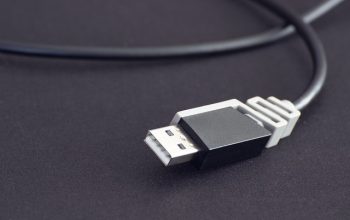When transitioning vehicle ownership through the DMV title transfer process, attention to detail is paramount. Whether you’re an individual or a dealer engaging in a title transfer after car purchase, the journey from owner to new owner can be fraught with potential missteps. This article serves as a guide to navigate the vehicle title transfer process smoothly, ensuring you meet all DMV title transfer requirements and avoid unnecessary delays. From understanding the nuances of title transfer fees and costs that vary by state and vehicle type, to handling out-of-state transfers, each step is crucial for a seamless transition. By adhering to our comprehensive checklist, you can confidently transfer a car title with minimal hassle. Learn how to sidestep common pitfalls and manage expenses effectively to ensure your transaction is as efficient as possible.
- Navigating the Vehicle Title Transfer Process Post-Purchase
- Essential DMV Title Transfer Requirements to Avoid Delays
- Understanding Variations in Title Transfer Fees and Costs Across States
- Steps for a Smooth Out-of-State Title Transfer Procedure
- Comprehensive Checklist for Title Transfer After Car Purchase
- Common Mistakes to Watch Out For in the DMV Title Transfer
- Tips for Managing Title Transfer Fees and Minimizing Expenses
Navigating the Vehicle Title Transfer Process Post-Purchase

Navigating the vehicle title transfer process post-purchase can be a straightforward task when approached with attention to detail and awareness of the necessary steps. The DMV title transfer requirements are critical for a successful transaction; they include providing proof of ownership, such as a bill of sale or purchase agreement, submitting the correct forms specific to your state, and ensuring the vehicle’s VIN matches the documentation. Additionally, buyers must be cognizant of the title transfer fees and costs associated with the process, as these can vary significantly based on location and vehicle type. To facilitate a hassle-free transfer, it is imperative to research how to transfer a car title according to your state’s regulations. This may involve visiting your local DMV office or utilizing their online services if available. For those handling an out-of-state title transfer, understanding the laws of both the selling and purchasing states becomes essential to avoid delays or complications. A comprehensive checklist tailored to your specific circumstances can serve as a valuable guide throughout this process, ensuring all necessary actions are taken in a timely manner and that the transfer is completed without unnecessary hurdles. It is advisable to begin the process promptly after the car purchase to avoid any potential disruptions or inconveniences caused by oversights or misunderstandings of the DMV title transfer requirements.
Essential DMV Title Transfer Requirements to Avoid Delays

When navigating the vehicle title transfer process, adherence to the DMV title transfer requirements is paramount to avoid delays. One of the first steps in the process is completing the appropriate forms; failure to submit a correctly filled-out application can result in processing hold-ups. The necessary form, such as an Application for Title and Registration (FORM TC-130), varies by state, so it’s essential to consult your local DMV’s guidelines. Additionally, providing accurate personal information, including proof of identity, residence, and Social Security number, is crucial. If this information is missing or incorrect, the title transfer could be significantly delayed.
Title transfer fees and costs are an important consideration throughout this process. These can vary greatly depending on the state and the type of vehicle being transferred. It’s imperative to be aware of these charges beforehand to avoid any unexpected expenses. Prospective title holders must also ensure that all liens are satisfied if the vehicle is not fully paid off. This step is necessary to transfer a car title legally and without complications. For those handling an out-of-state title transfer, understanding both the originating state’s laws and the new state’s regulations is essential. A comprehensive DMV title transfer checklist can serve as a valuable tool to ensure all requirements are met and that the process proceeds smoothly from start to finish. This includes having the proper documentation, such as the current title, proof of vehicle sale or inheritance if applicable, and payment for any associated fees. By being well-prepared and aware of these DMV title transfer requirements, individuals can facilitate a swift and efficient transfer of car titles after purchase.
Understanding Variations in Title Transfer Fees and Costs Across States

When navigating the vehicle title transfer process, one must be acutely aware of the varying DMV title transfer requirements across different states. The fees and costs associated with this procedure are not uniform, presenting a notable challenge for individuals transferring car titles, especially when dealing with an out-of-state transfer. Each state’s Department of Motor Vehicles (DMV) sets its own rules and charges for title transfers, which can encompass a range of expenses from document filing fees to titling and registration costs that differ by vehicle type. This variability necessitates careful planning and research. Prospective title holders must explore the specific requirements of both their current and new state to ensure compliance with local laws and avoid delays. For instance, some states may require additional documentation, such as proof of insurance or a vehicle inspection report, which can affect the timeline and cost of the transfer. By utilizing a comprehensive DMV title transfer checklist tailored to the particularities of one’s state of residence, individuals can streamline the process, mitigate potential errors, and ensure a smooth transition of car ownership. Understanding these nuances is essential for a hassle-free transfer and avoiding unnecessary expenditures or legal complications during the how to transfer a car title process after a car purchase.
Steps for a Smooth Out-of-State Title Transfer Procedure

When transferring a vehicle title from one state to another, it’s imperative to familiarize oneself with both the sending and receiving states’ specific DMV title transfer requirements. The process begins by obtaining a bill of sale and completing the necessary forms for title transfer after car purchase. These documents serve as proof of ownership and transaction details. It’s also crucial to provide your driver’s license and any other identification required by the state where the vehicle is being transferred. The next step involves notifying your current state’s DMV of the sale, ensuring that your name is removed from the vehicle’s records. This typically requires submitting a transfer notice and possibly paying a notification fee.
Upon successful completion of these steps, you must apply for a title in the new state. This application should be accompanied by the previous title, proof of insurance, and any relevant emission and safety inspections, if mandated by the state. Title transfer fees and costs vary, so it’s essential to research these expenses in advance to avoid any financial surprises. The new state’s DMV will provide guidelines on acceptable payment methods, which may include a combination of electronic transfers or mailed payments. A thorough checklist can serve as a roadmap for the vehicle title transfer process, ensuring all necessary documentation and fees are accounted for, thereby avoiding delays and complications. Remember to keep track of all deadlines and follow up on the status of your application to expedite the transfer and legally register your vehicle in its new home state.
Comprehensive Checklist for Title Transfer After Car Purchase

When purchasing a vehicle, completing the vehicle title transfer process efficiently is paramount. To navigate this process smoothly, a comprehensive checklist for title transfer after car purchase is indispensable. It should include all DMV title transfer requirements specific to your state and vehicle type. Ensure you have the proper bill of sale, proof of insurance, and identification documents ready. Additionally, be aware that title transfer fees and costs can vary significantly depending on jurisdiction and the kind of vehicle you are transferring. For an out-of-state title transfer, familiarize yourself with both the sending and receiving state’s laws to avoid oversights. This checklist should also remind you to notify your lender if the vehicle is financed, and to record the VIN (Vehicle Identification Number) for accurate processing. By adhering to this detailed guide, you can sidestep common pitfalls and complete the transfer without unnecessary delays. Remember to gather all necessary paperwork ahead of time, including the title application form, proof of sale, odometer disclosure statement if applicable, and any lienholder information. This preparation will ensure a swift and hassle-free transfer of car ownership. With this checklist in hand, how to transfer a car title becomes a straightforward task, allowing you to confidently complete the process and enjoy your new vehicle without complications.
Common Mistakes to Watch Out For in the DMV Title Transfer

When initiating the vehicle title transfer process, it’s crucial to be vigilant about adhering to DMV title transfer requirements to avoid delays and potential legal issues. One common pitfall is failing to promptly notify the previous owner to cancel their insurance on the vehicle, which can lead to complications with proving the vehicle’s liability coverage. Another frequent mistake is not completing all sections of the title transfer forms accurately, including omitting or providing incorrect personal information or vehicle details, such as the VIN number. This oversight can result in processing delays and may even cause the application to be rejected. It’s also essential to stay informed about title transfer fees and costs, which vary by state and type of vehicle. Overlooking these expenses can lead to unexpected financial burdens or additional time needed to finalize the transaction. To ensure a smooth process during a title transfer after car purchase, it’s advisable to prepare all required documents in advance, including proof of insurance, sales contracts, identification, and payment for any associated fees. Utilizing a comprehensive DMV title transfer checklist can serve as a valuable tool to navigate this process efficiently and prevent common mistakes. This checklist should include every document and step necessary for your specific state’s requirements, ensuring that the transfer is completed correctly the first time.
Tips for Managing Title Transfer Fees and Minimizing Expenses

When navigating the vehicle title transfer process, understanding and managing title transfer fees and costs is crucial to minimize expenses. Title transfer after car purchase often involves various charges that can include filing fees, title fees, and sales tax, which vary significantly by state and even within different counties. To manage these costs effectively, start by researching the exact DMV title transfer requirements for your specific situation. This due diligence allows you to prepare financially and avoid unexpected expenses. For instance, if you’re purchasing a vehicle from a private party, ensure you understand the tax implications and have the necessary funds set aside. Additionally, if you’re transferring a title out-of-state, be aware that both your current and new state may have different fee structures. Preparation is key; check the official DMV website for your state to access a comprehensive list of associated fees and costs beforehand. By doing so, you can accurately budget for the transaction, potentially avoiding delays or additional charges due to insufficient funds. Another cost-saving tip is to complete the transfer as expediently as possible after the car purchase to avoid any late fees that might accumulate with prolonged ownership without a proper title. Lastly, consider electronic processing options if available, as some states offer discounts for e-transactions, further reducing the overall cost of transferring a vehicle title.
When transferring a vehicle title, adherence to detailed procedures and understanding of state-specific regulations are paramount. The DMV title transfer process, while designed to be straightforward, can present challenges if one is not well-prepared. By familiarizing oneself with the necessary DMV title transfer requirements, such as completing the correct forms and recognizing the range of title transfer fees and costs associated with different states and vehicle types, car owners can seamlessly navigate this transition. A thorough checklist, as outlined in the ‘Comprehensive Checklist for Title Transfer After Car Purchase’ section, is an indispensable tool to ensure all steps are followed correctly. This proactive approach not only streamlines the process but also helps prevent common mistakes that can lead to delays. For those handling a title transfer after a car purchase, especially if it’s out-of-state, leveraging the insights from ‘Understanding Variations in Title Transfer Fees and Costs Across States’ and ‘Steps for a Smooth Out-of-State Title Transfer Procedure’ is highly beneficial. Ultimately, a well-informed approach to the vehicle title transfer process will lead to a hassle-free experience, ensuring compliance and savings on title transfer fees and costs.



